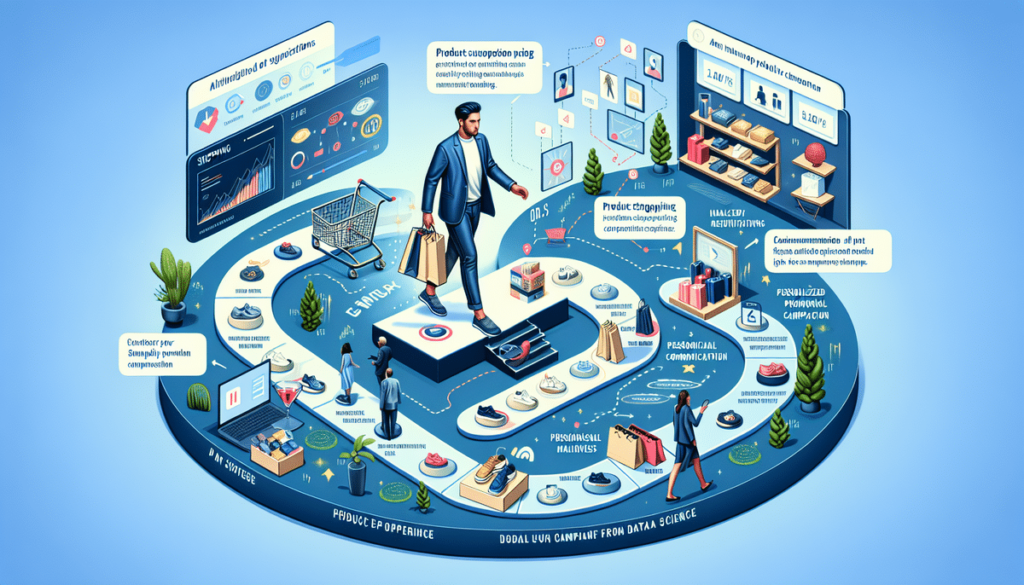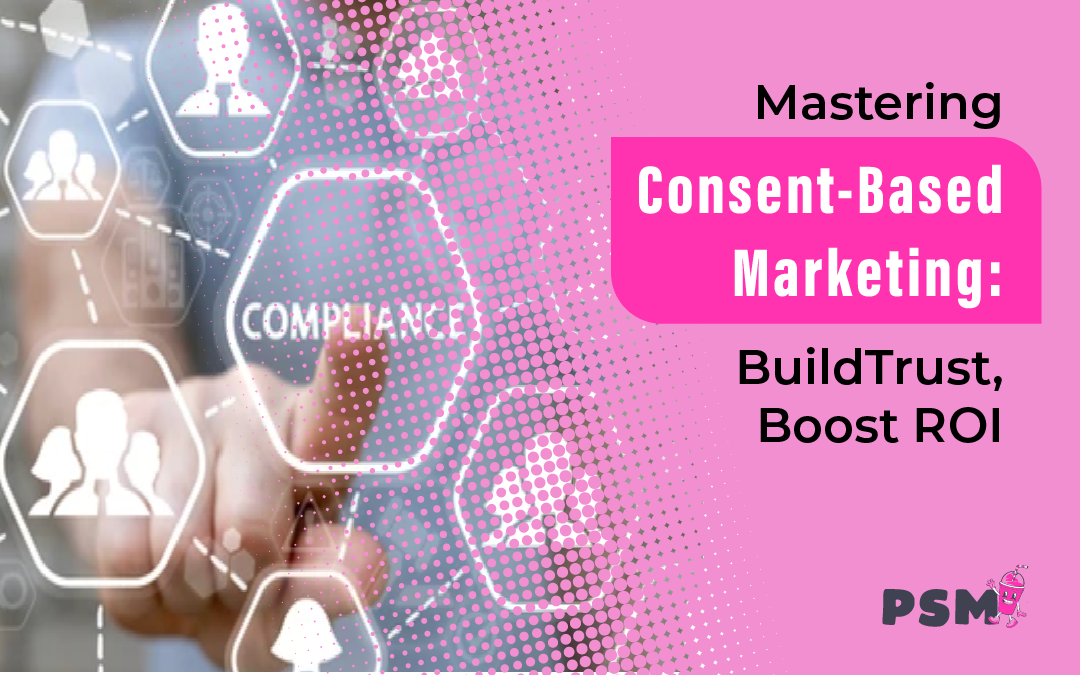Customer connections that mean something are what drive you as a marketer. Balancing personalized experiences with privacy can be challenging. Consent-based marketing offers a solution. It’s about treating your audience with respect, offering tailored content only with their permission. By building rock-solid relationships, you’re not just getting customers – you’re gaining a tribe of loyal followers who’ll stand by you through thick and thin.
Want to make sure your marketing efforts are always on point? This article explores the what, why, and how of consent-based marketing for marketers of all levels. Kickstart your marketing plan with confidence, whether you’re just getting started or refining your approach with a focus on consent.
Table Of Contents:

- What is Consent-Based Marketing?
- Why Consent Matters More Than Ever
- Your brand’s fate rests on doing marketing differently – so put permission at the forefront of your approach.
- Consent-Based Marketing: From Compliance to Connection
- Tech Solutions for Streamlined Consent
- A Real-World Example
- Conclusion
What is Consent-Based Marketing?
In 1999, Seth Godin introduced “permission marketing,” the predecessor to consent-based marketing. He made a point to ask for permission upfront. One preposition, infinite possibilities: that’s the tricky territory you enter when you start with “before”. sending marketing messages.
Stricter data privacy regulations like GDPR further evolved this concept. Now the emphasis is on clear, express written consent before contacting consumers. With this method, the data belongs to the customer, and they call the shots.
Why Consent Matters More Than Ever
In today’s digital world, personalized experiences are highly valued. Privacy trumps data every time, as customers ultimately care more about safeguarding their personal information. Fear of being vulnerable holds many back from opening up.
A UN study found nearly 70% of countries have privacy regulations. Cisco’s 2023 Data Privacy Benchmark Study showed 39% of people want clear explanations of how brands use their data.
The right approach is legally sound and customer-friendly. Communicating data intentions clearly builds trust.
Your brand’s fate rests on doing marketing differently – so put permission at the forefront of your approach.
To market with integrity, you need to put customer wishes at the forefront, act with integrity when handling their data, and stay up to speed on laws that govern data use. Given the international scope, many data laws likely overlap. Consider the following steps when implementing your strategy:
Obtain Explicit Consent

Consent must be actively given, not assumed. Avoid pre-checked boxes or confusing fine print. Use clear language for proper opt-ins, and let your audience choose regarding their data.
Document Everything
Keep organized consent records. Log when, how, and why consent was provided. Regulations stand firm on one thing: for audits, you need solid proof that everyone on board gave their informed consent.
Build Trust
Always respect user preferences. If a user signs up for your newsletter, make the unsubscribe button easy to find.
Regularly Audit
Data protection regulations and data uses constantly change. Regularly review your practices.
Consent-Based Marketing: From Compliance to Connection
The Power of First-Party and Zero-Party Data
Zero-party and first-party data drive personalized, non-invasive campaigns. First-party data reveals user clicks, viewed pages, and purchased products from your owned media.
Zero-party data is even better. Users willingly share their interests and preferences directly, eliminating guesswork.
When you put first-party data to work, ad performance gets a stark reality check – averages soar, and customers win with more precise, more persuasive messaging.
Balancing Personalization and Privacy

This balance is tricky. Customers want personalized experiences but dislike privacy intrusions. Having some degree of control over our personal data is a pretty universal desire. The thing is, most of us are in the dark about how our info is actually being managed.
Transparency eases concerns. When customers sail through the consent process without a hitch, they’re more likely to stick around.
Tech Solutions for Streamlined Consent
These tools help track and comply with consent preferences:
- Consent Management Platforms (CMPs): CMPs efficiently manage and track user consent preferences.
- Google Consent Mode v2: Integrate consent data into your marketing technology for better analysis. It works well with preference management solutions, Customer Match, Enhanced Conversions, and GA4.
- Preference Management: Empower customers to choose content and engagement types.
- Server-Side Tagging: Improve privacy using first-party data instead of third-party cookies.
Choosing marketing technology partners requires balancing performance and options. LiveRamp reports nearly 100 providers. Tools like LeadsBridge, with over 380 integrations, streamline these decisions by syncing with various marketing technologies. Get straight to the heart of your audience and monitor the response. Boosting sales starts with transforming browsers into buyers – it’s all about refining that delicate moment when a prospect turns into a customer. We Dispense with the Cookies solution worries, and you can finally exhale.
A Real-World Example
Apple’s iOS 14.5 release demonstrated consent-based marketing’s power. Apple asked for data tracking permission, which leading apps utilized effectively.
Focusing on what matters, brands chose to emphasize the personal touch of tracking rather than dwelling on drawbacks. Two key benefits emerged from this approach: firstly, a dramatic rise in consent rates, and secondly, a participant base that was genuinely invested in our goals. Data privacy laws influence this change, while documented prior express written consent protects marketers. Laws about personal data differ from country to country, which makes asking for permission in writing beforehand absolutely crucial.
Conclusion

Consent-based marketing is more than a legal requirement. When we prioritize ethical data practices, we’re not just gathering numbers – we’re cultivating lasting connections with our customers. You create conversations customers control.
Honoring data choices builds trust. Customers become downright devoted to the brand. Businesses win customer hearts by shouldering a sacred responsibility: honoring permission. When companies guarantee that opt-in is opt-in, and opt-out is opt-out, customers reciprocate with devotion, catapulting them to the pinnacle of their respective markets.
The process of gaining consent from customers upgrades the quality of our lead data. When you focus on leads who’ve already raised their hand and connect with the right folks, marketing gets a whole lot easier. Even with changes to hefty fines, or cost-per-lead marketing partners that charge marketers differently, consent-based marketing remains essential. Companies can confidently comply with regulations and get explicit agreement from the people they’re contacting – it’s all about respecting people’s boundaries. First, we verify that consent has been properly documented, and then we sift through the rules that govern prospect identification. Paying attention to consent preferences is a deal-breaker – ignore them at your own risk.
From strategy and tools to real-world examples, the core principle remains: respect your audience. Marketers win people’s trust – and get better results – when they prioritize privacy. Regulators and customers may seem like disparate groups, but the key to pleasing both is surprisingly simple: cultivate meaningful relationships. Respecting customers’ boundaries doesn’t just do right by them – it strengthens brand loyalty and boosts engagement in the process. What if marketing and communications prioritized customer preferences above all else? This commitment would not only elevate customer satisfaction but also propel the industry toward a brighter, more responsible future.


0 Comments